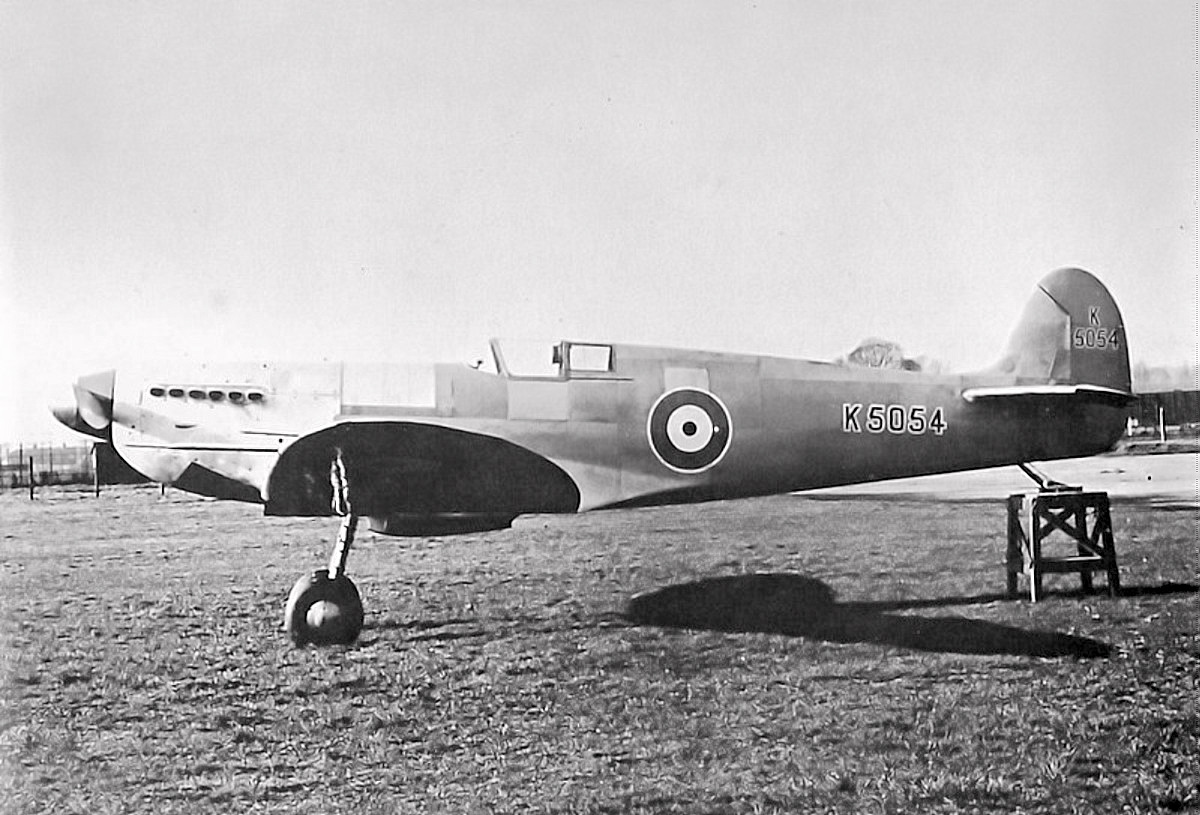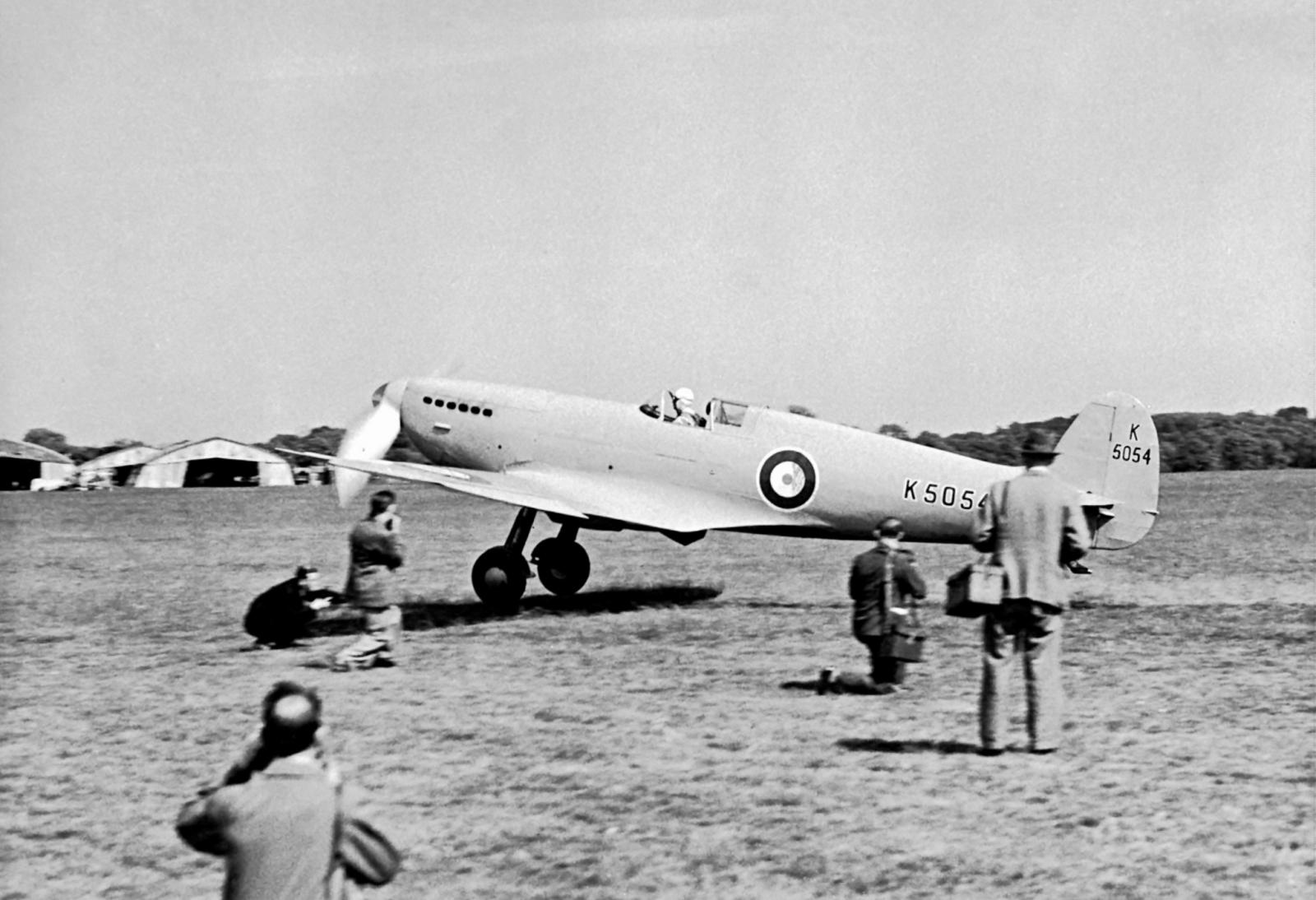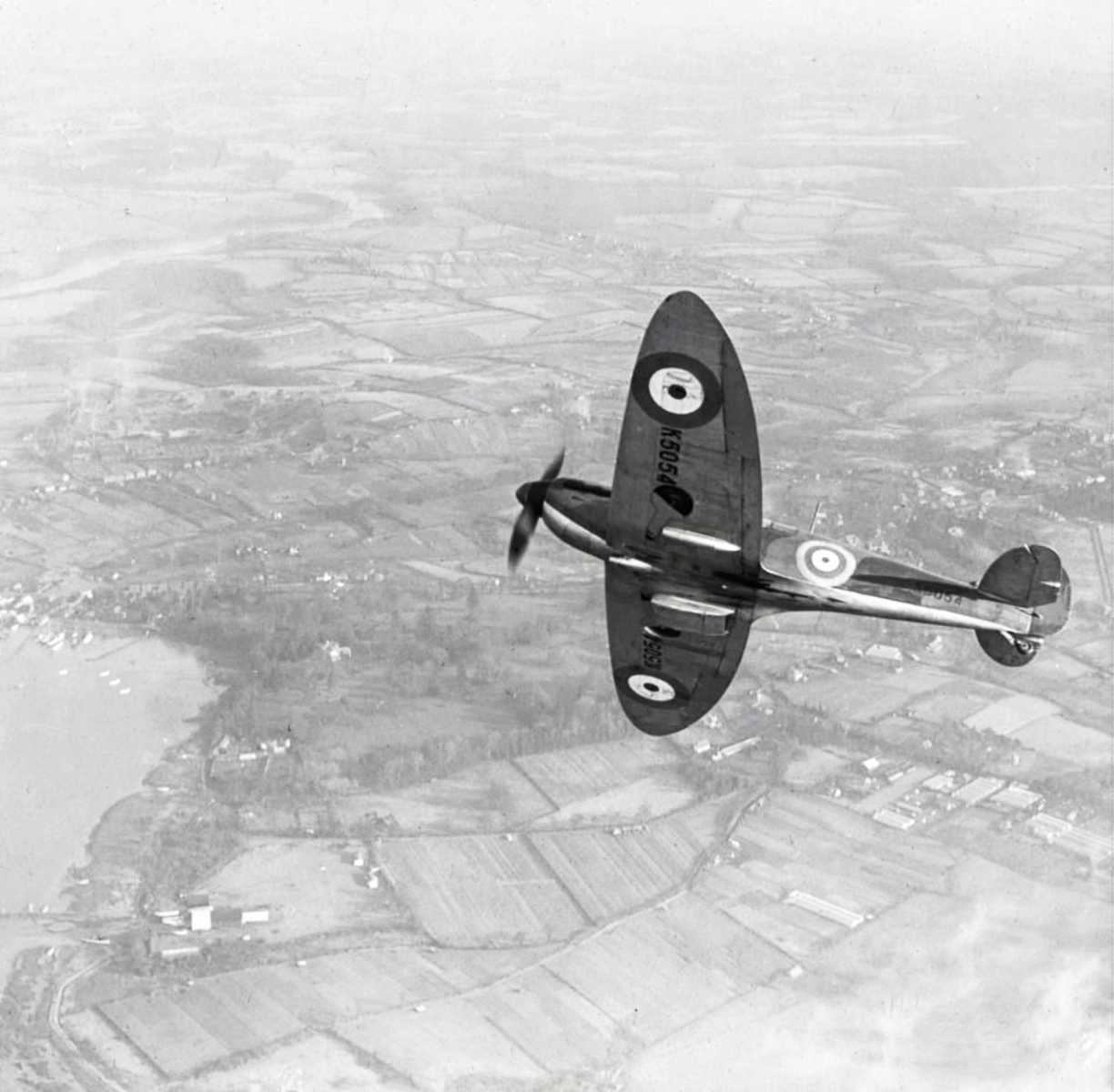Spitfire maiden flight 85th anniversary
Header image: Spitfire prototype K5054 at Eastleigh in the unpainted state in which it flew for the first time in March 1936.
Eighty-five years ago this month a momentous event took place with the first flight of the Supermarine Spitfire prototype, K5054, from the company’s airfield at Eastleigh, Southampton. At the time, those present could not have realised the full significance, or that thousands of Spitfires would subsequently play a vital part in world history over the coming decade.
The exact date of the first flight of the Spitfire is open to question. The generally accepted date is 5th March 1936. However, Jeffrey Quill – the famous Spitfire test pilot who was there on the day and remembered it with clarity – stated categorically in his autobiography (‘Spitfire – A Test Pilot’s Story’) that the first flight took place on 6th March 1936. Not that the exact date really matters.
The construction of K5054, the Spitfire prototype, had begun over a year previously in December 1934. When it was rolled out prior to its first flight in March 1936, K5054 was unpainted except for its serial number and RAF roundels. Different grades of aluminium alloy used for fuselage panelling gave it a rather ‘patch-work quilt’ appearance. In addition, when it first flew the undercarriage doors had yet to be fitted.

The prototype Spitfire made it first flight in the hands of Supermarine company test pilot “Mutt” Summers and the aircraft was reported to handle beautifully. This was perhaps just as well, because even before the prototype had completed its official trials the RAF had ordered 310 Spitfires. A few days later, prior to its first official presentation, K5054 received an overall high gloss blue green finish. Later it was painted in its famous high gloss, light blue-grey, ‘French Grey’ colour.

Many minor modifications and refinements were subsequently made to K5054 as a result of flight trials. The elevator horn balance was modified, reduced straight, ejector exhausts replaced the flush-fitted stacks, a tail wheel was mounted in place of the fixed tail skid, and different propellers were fitted. Eventually, K5054 emerged as the pattern for the production version of the Spitfire 1 and it was painted with the standard RAF Dark Green and Dark Earth camouflage scheme over silver lower surfaces.

K5054 met an unfortunate end in a fatal crash on 4th September 1939 at the Royal Aircraft Establishment in Farnborough, by which time 11 operational RAF squadrons were equipped with Spitfires. Eventually, 20,351 Spitfires were built.







